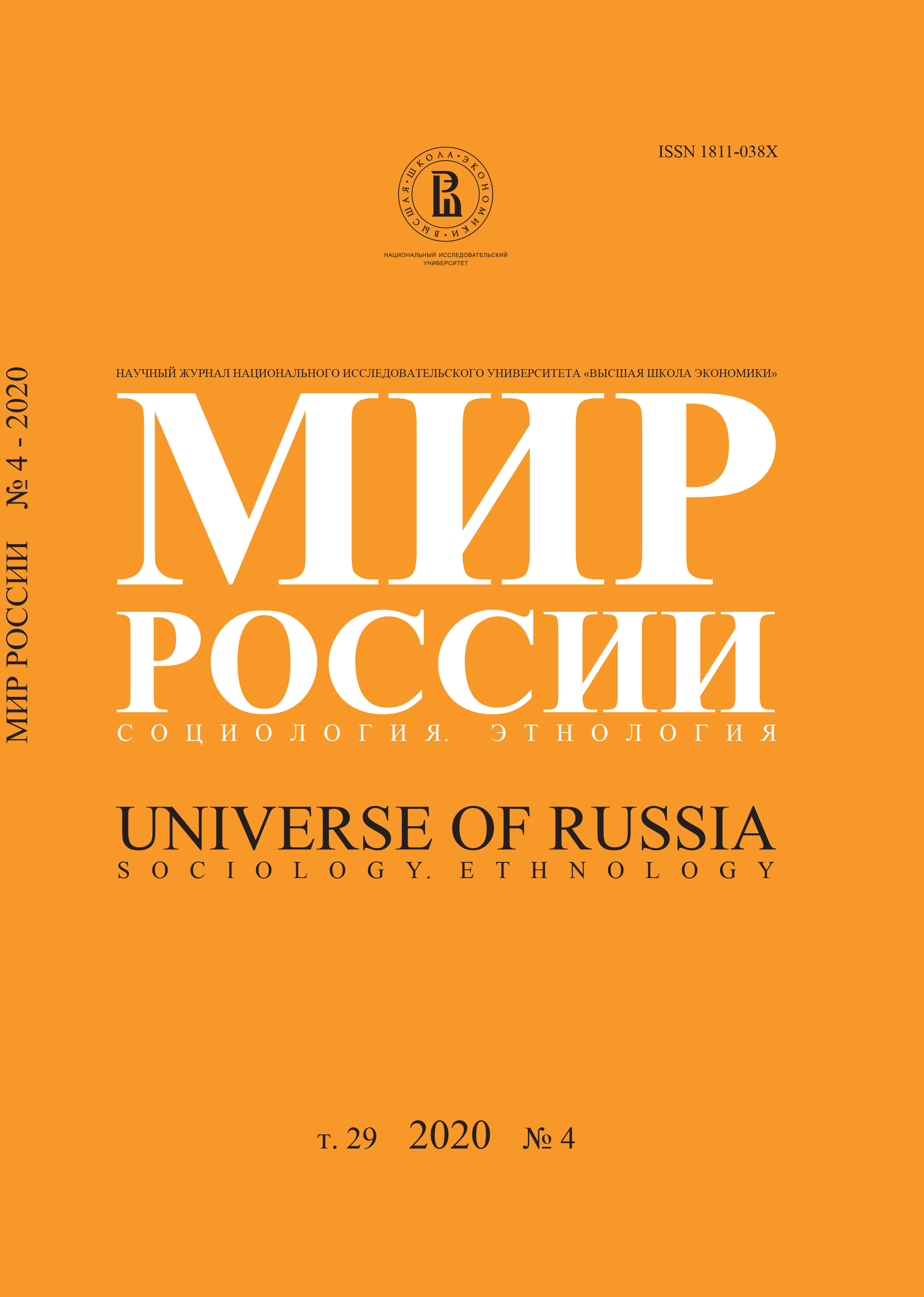Various Theoretical Approaches to The Russian Middle Class: Thresholds and Internal Structure
Abstract
Citation: Tikhоnova N. (2020) Various Theoretical Approaches to The Russian Middle Class: Thresholds and Internal Structure. Mir Rossii, vol. 29, no 4, pp. 34–56 (in Russian). DOI: 10.17323/1811-038X-2020-29-4-34-56
The main approaches to the study of the middle class can be put in two groups: economic and sociological. They are based on different theoretical assumptions and are used
to solve different research problems. The economic approach is primarily important for the purposes of social policy, whereas the sociological one allows a better understanding
of a particular society and its social structure, and the identification of the main contradictions in its development. Each approach exists in many variations. Nevertheless,
the middle class defined in the economic approach always comprises of the middle strata in terms of their welfare or current income, which are divided into the lower middle
class and the upper middle class. In Russia, the middle class defined this way makes up about two-thirds of the population. The middle class defined in the framework
of the sociological approach includes individuals who occupy middle positions in different status hierarchies; the key ones include power, property, economic opportunities, lifestyle,
and prestige. Like any social group, the middle class consists of the core and the periphery but can also be structured into strata according to the vertical model of stratification.
This article provides quantitative estimates of the segments of the Russian middle class. The core middle class, i.e. people simultaneously occupying middle positions in all of the
status hierarchies comprise only a small part of the Russian population (less than 8%). However, more typical for modern Russia is the situation when positions in different
status hierarchies do not coincide. It is important to understand which groups with non-consistent statuses can be included in the middle class and why. The analysis
presented in the article demonstrates that the middle class in Russia amounts to more than a third of the country’s population.






